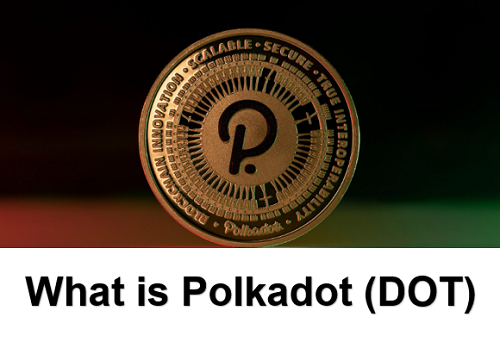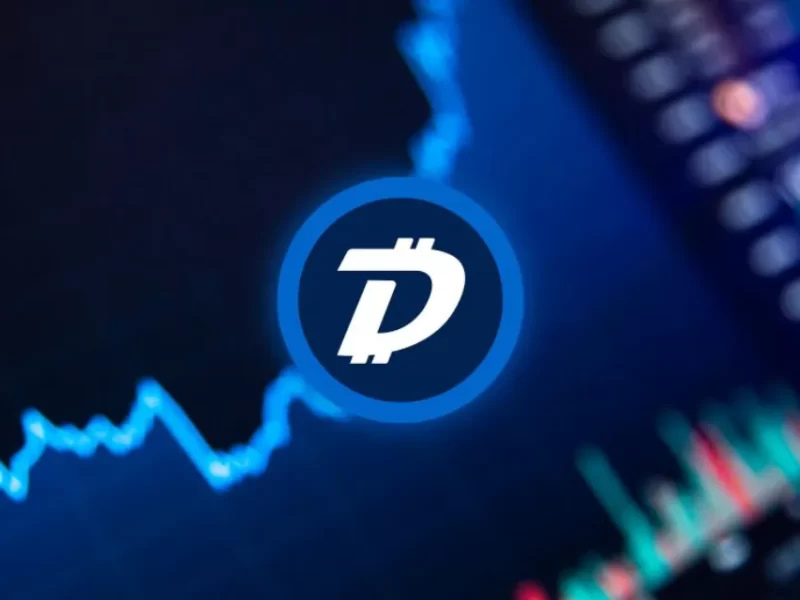Polkadot is a “multi-chain network” that aims to connect different specialized blockchains into a single unified network.
What is Polkadot (DOT)?
Polkadot is a network designed to join the dots with all other networks. It’s commonly referred to as a “multi-chain network” because it can join networks together, whereas networks like Bitcoin operate on their own.
Its ultimate aim is to act as a framework for all blockchains that opt-in, a bit like how HTML allows sites, browsers, and servers to interact with each other. The idea is to take care of messy and costly cryptocurrency mining processes (including validation of transactions and security protocols) and enable developers to focus on creating app and smart contract functionality.
How does Polkadot (DOT) Work?
Blockchains can connect with Polkadot and work in parallel as so-called “parachains” to access the network’s proof-of-stake validation of transactions and security.
In the network’s so-called “relay chain”, transaction addresses are checked and data is standardized so that every system can understand it. This is where all the chains pool security.
While functionality is taken care of, blockchains connected to Polkadot can use their own PoS mechanism, decide when and how to update their code and run the apps or tokens they choose. It’s essentially a pick and choose layer that allows networks to preserve their own security and incorporate new protocols.
How is Polkadot Structured?
The Polkadot network includes a main blockchain called the “relay chain” and many user-created parallel chains (or “parachains”). It also has a connecting layer, or “bridge,” that allows value and data to be transferred between most blockchains — and can even be used to connect to non-blockchain databases.
How Does Staking Work on Polkadot?
Polkadot uses a proof-of-stake consensus mechanism (as opposed to the proof-of-work system Bitcoin uses) to secure the network, verify transactions, and create and distribute new DOT. There are several ways DOT holders can interact with staking system — depending on how much time, technical knowledge, and money they want to devote.
Polkadot(DOT) Price Analysis 2022
Currently, DOT holds the 9th place on CoinGecko. But will the latest upgrades, development, and changes in the DOT blockchain help the cryptocurrency price to reach higher? Let’s proceed to the charts in this DOT price prediction article. It has gained 16% in the past two weeks.
Keltner channel is a technical analysis indicator that is used to determine trend directions by measuring the volatility above or below the candlesticks. From the Keltner Channel signals for Polkadot (DOT), it could be seen that the present uptrend could continue since the last candlestick is not touching the bottom curve in the Keltner Channel chart above. This shows that the present increase in the price of DOT might be sustained for some time before any reversal would be expected.

The Future of Polkadot (DOT)
Polkadot has a bright future ahead of it in 2022. With the ongoing developments happening within the DOT ecosystem, as well as in the overall crypto market, we may see DOT reach new heights. Bullish DOT price prediction 2022 is $55, though it could push further to $80
Does Polkadot Have Smart Contracts?
No – and yes. The Polkadot Relay Chain does not implement smart contracts natively. The reason for not having smart contracts on the Relay Chain is part of the design philosophy for Polkadot that dictates that the Relay Chain should be the minimal logic required to accomplish its job.
However, Polkadot will be a platform for other chains that do implement smart contracts. It’s possible for parachains to enable smart contract functionality and then benefit from the security and interoperability features of Polkadot. Additionally, existing smart contract chains can connect to Polkadot as a parachain, or via a bridge.
While the Polkadot Relay Chain does not implement smart contracts directly, undoubtedly there will be parachains that do. So it’s better to say that the Polkadot ecosystem has smart contracts versus “Polkadot has smart contracts.”
What is the Difference Between DOT (Old) and New DOT?
The DOT (old) unit on Polkadot was at twelve decimal places, otherwise known as 1e12 Plancks. On 21 August, 2020, Denomination Day, the DOT (old) value was redenominated to 1e10 (10_000_000_000, or ten billion) Plancks, meaning that the new DOT was valued at ten decimal places. Following the redenomination, the new DOT is called DOT.
What is the Polkadot Minimum Balance?
Polkadot is a special asset that has built-in rules on minimum balances. Just like some bank accounts that require a minimum deposit, in order to activate and use Polkadot (DOT), you must deposit and maintain a balance greater than 1 Polkadot (DOT) in your Exodus Polkadot (DOT) address.
Once you have made a deposit of 1 or more Polkadot, your account will get activated and everything will be just like the way you are used to with Bitcoin, Ethereum or any other asset within Exodus.
History of Polkadot (DOT)
The history of Polkadot actually starts with the history of Ethereum. You see, Polkadot was founded by Ethereum co-developer, Gavin Wood. Wood was the co-founder, initial CTO, and core developer of Ethereum. He is also well known as the individual that invented the Solidity smart contract programming language that resides at the core of Ethereum’s functionality.
Wood decided to leave Ethereum to build a more robust programmable blockchain in early 2016. Specifically, he pondered how to develop a sharded version of Ethereum. By October 2016, he had the technical aspects worked out and had published the blockchain’s whitepaper.



